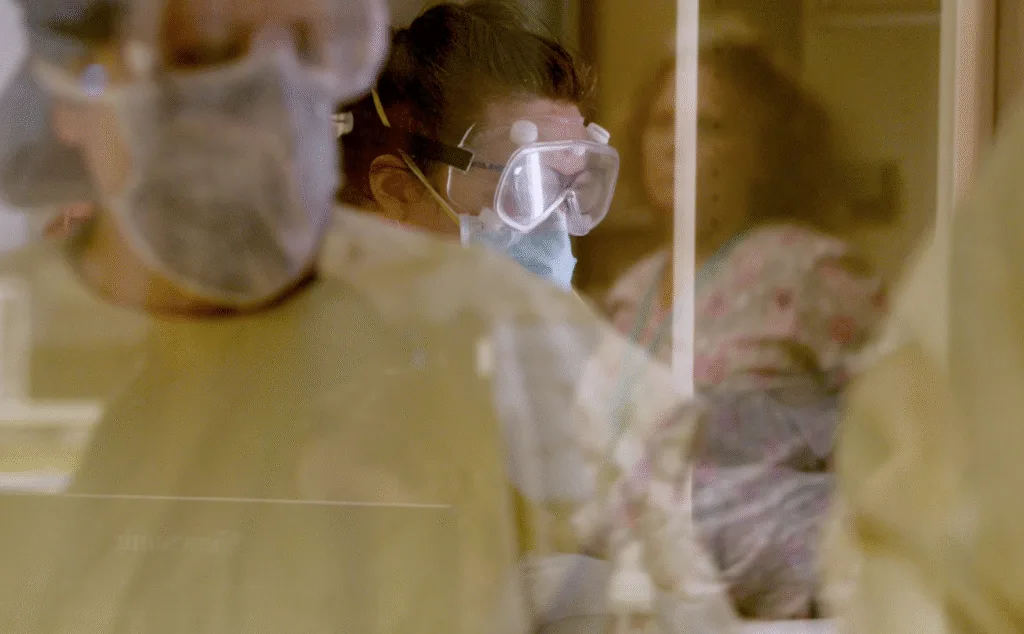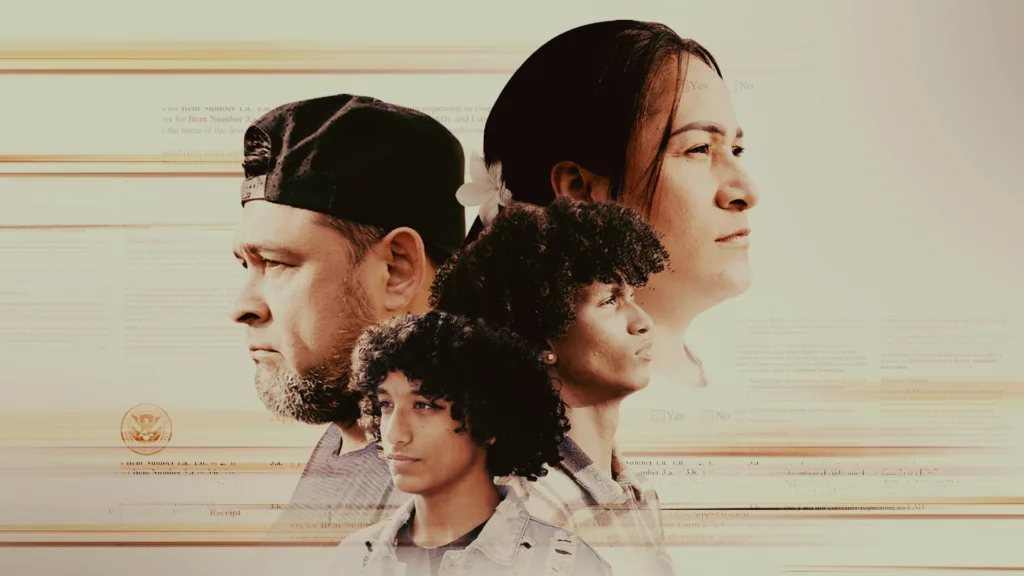The Coronavirus Pandemic: 8 FRONTLINE Documentaries to Watch

December 16, 2020
Share
It took America about eight months from its first identified COVID-19 case to reach a death toll of 200,000. Reaching 300,000 took less than three months more.
The U.S. crossed that grim threshold Monday, Dec. 14, according to The New York Times’ and Johns Hopkins University’s COVID trackers, following weeks of surging cases across the country. That same day, the first doses of an approved COVID-19 vaccine were administered to front-line health care workers in the country after a development, testing and approval process that set FDA records for speed.
The U.S. also set a single-day COVID death record — more than 3,000 — on Dec. 9. Although vaccines are anticipated to be available to the general public in the coming months, medical and public health experts are warning that the country is likely to be in for a difficult winter and urging adherence to health guidelines. CDC Director Dr. Robert Redfield said last week, “We are in the timeframe now that, probably for the next 60 to 90 days, we’re going to have more deaths per day than we had in 9/11 or we had at Pearl Harbor.”
FRONTLINE has been chronicling developments in the coronavirus pandemic for much of 2020. Explore these films from FRONTLINE’s online collection of streaming documentaries to understand how we reached this point, how COVID spread across the country and world, and how the pandemic has impacted communities in America that were already vulnerable.
America’s Medical Supply Crisis investigates why the U.S. was left scrambling for critical medical equipment as the coronavirus swept the country.
From N95 masks to ventilators, FRONTLINE investigated the fragmented global medical supply chain and the deadly consequences of equipment shortages in this October documentary with the Associated Press and the Global Reporting Centre.
Growing Up Poor in America looks at how the pandemic has impacted kids living in poverty.
Their families were already struggling to make ends meet. Then came the coronavirus. This September documentary followed children in three Ohio families as the COVID-19 pandemic amplified their struggle to stay afloat.
Love, Life & the Virus tells the story of a Guatemalan immigrant mother’s fight to survive COVID and see her newborn baby.
This August documentary, an emotional look at one family’s quest to be reunited and the community members who helped make it possible, is also available en español.
Undocumented in the Pandemic looks at a Honduran immigrant’s struggle to keep her children safe and housed, while her husband is detained by ICE in a facility where COVID is spreading.
With The Marshall Project and the Pulitzer Center, this August film provides a window into the realities of navigating the pandemic while undocumented.
COVID’s Hidden Toll investigates how the coronavirus has impacted essential agriculture workers, who pick and process the food we eat.
This July documentary follows some of the coronavirus pandemic’s invisible victims, including crucial farm and meat-packing workers, many of them undocumented immigrants, who lack protections and have been getting sick.
The Virus: What Went Wrong? looks at why America’s leaders failed to prepare for the pandemic, despite repeated warnings.
From June, this investigation identifies fateful missteps in the world’s — and the Trump administration’s — early responses to the pandemic.
Inside Italy’s COVID War follows a doctor and her colleagues on the front lines of the coronavirus outbreak, as Italy’s crisis was peaking.
This May film captures medical professionals waging a harrowing fight against the disease as it overwhelmed Cremona hospital in northern Italy and put an 18-year-old on a ventilator.
Coronavirus Pandemic looks at what happens when politics and science collide.
This April investigation of the American response to COVID-19 contrasts Washington state’s approach to the virus with that of Washington, D.C.
Beyond the coronavirus pandemic, hundreds of additional documentaries are available in FRONTLINE’s online collection of streaming films and on the PBS Video App.

Latest Documentaries
Explore
Policies
Teacher Center
Funding for FRONTLINE is provided through the support of PBS viewers and by the Corporation for Public Broadcasting. Additional funding is provided by the Abrams Foundation; Park Foundation; the John D. and Catherine T. MacArthur Foundation; and the FRONTLINE Trust with major support from Jon and Jo Ann Hagler on behalf of the Jon L. Hagler Foundation, and additional support from Koo and Patricia Yuen. FRONTLINE is a registered trademark of WGBH Educational Foundation. Web Site Copyright ©1995-2025 WGBH Educational Foundation. PBS is a 501(c)(3) not-for-profit organization.


















